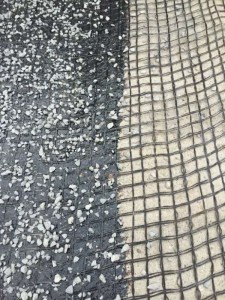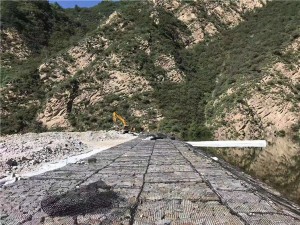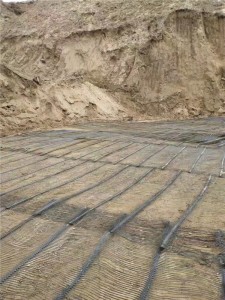In engineering construction practice, we summarized the construction characteristics of geogrids:
1. Construction site of geogrid: It is required to be compacted and leveled, in a horizontal shape, and remove sharp and protruding objects.
2. Laying of geogrid: On a flat and compacted site, the main stress direction (longitudinal) of the installed geogrid should be perpendicular to the embankment axis direction, and the laying should be flat, without wrinkles, and should be tensioned as much as possible. Fixed by inserting and pressing earth and stone, the main stress direction of the laid grid is preferably the full length without joints, and the connection between the widths can be manually bound and overlapped, with the overlapping width not less than 10cm. If the grid is installed in more than two layers, the joints between layers should be staggered. After a large area of thin installation, its flatness should be adjusted as a whole. After covering a layer of soil and before rolling, the grid should be tensioned again with manpower or machinery, with uniform force, so that the grid is in a straight stress state in the soil.
3. Selection of filler after entering the geogrid: The filler shall be selected according to the design requirements. Practice has proven that all but frozen soil, swamp soil, household garbage, chalk soil, and diatomite can be used as fillers. However, gravel soil and sand soil have stable mechanical properties and are slightly affected by water content, so they should be preferred. The particle size of the filler shall not be greater than 15cm, and attention shall be paid to controlling the grading of the filler to ensure the compaction weight.
4. Paving and compaction of key fillers after completion of geogrid: When the geogrid is laid and positioned, it should be filled and covered in a timely manner. The exposure time should not exceed 48 hours. Alternatively, a flow process method of backfilling while laying can be adopted. Pave filler at both ends first, fix the grid, and then advance towards the middle. The rolling sequence is from both sides to the middle. During rolling, the roller is not resistant to direct contact with the reinforcement material, and vehicles are generally not allowed to drive on uncompacted reinforcement bodies to avoid dislocation of the reinforcement material. The layer compaction degree is 20-30cm. Compaction must meet the design requirements, which is also the key to the success of reinforced soil engineering.
5. The final treatment measures for water prevention and drainage: In reinforced soil engineering, it is necessary to do a good job of drainage treatment inside and outside the wall; Protect your feet and prevent erosion. Filter and drainage measures shall be provided in the soil mass, and if necessary, geotextile and permeable pipes (or blind ditches) shall be provided. Drainage shall be conducted by means of dredging, without blocking, otherwise hidden dangers may arise.
Post time: Apr-18-2023








